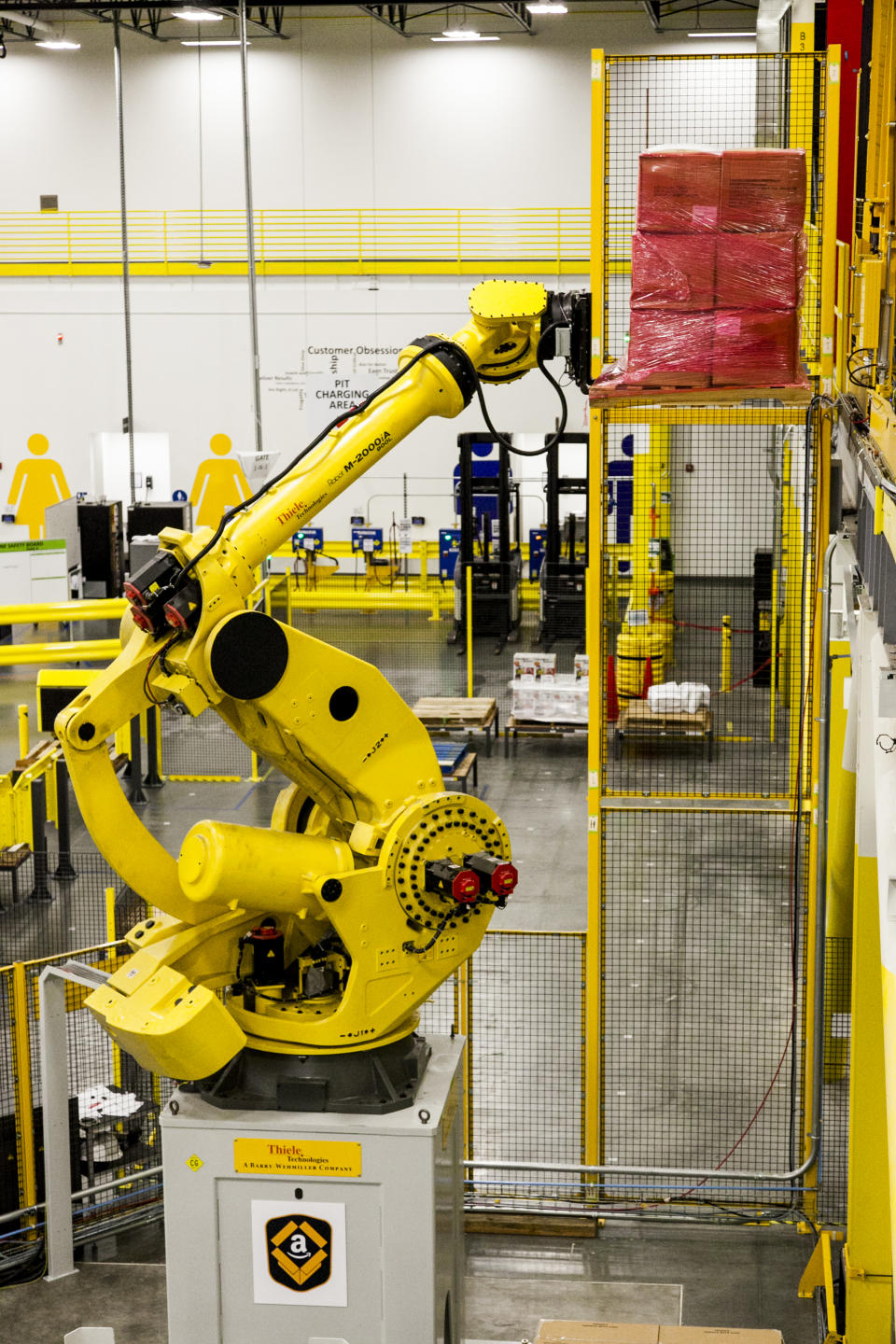Amazon Union Push Could Lead to More Automation as Labor Costs Rise

While the U.S. union movement relished a major victory after workers at an Amazon warehouse in Staten Island voted to unionize, Wall Street analysts sharpened their pencils and tried to figure the impact on the web giant’s bottom line.
The early take was that, while unionization is a slow process across an organization as large as Amazon, it could well boost costs. The roughly 8,300 warehouse workers set to engage in collective bargaining with Amazon on Staten Island represent about 1 percent of the company’s roughly 750,000 U.S. warehouse workers.
More from WWD
Why the Fiorucci Store Was the Mother of All Retail Concepts
Amazon Prime Day 2020: Fashion and Beauty Deals to Check Out
Morgan Stanley analyst Brian Nowak estimated in a research note that for every 1 percent of Amazon’s front-line workforce that is unionized, the company’s annual operating expenses would increase by about $150 million.
That, of course, is real money and would amount to $15 billion annually if all of Amazon’s warehouse workers unionized. But then again, Amazon after years and years of losses is now very profitable, with net income of $33.4 billion in 2021 and a current market capitalization of $1.7 trillion.
And that’s the rub. Investors put up with Amazon’s losses in hopes of future profits — and now that those profits have materialized, they want the company to put that money to work in the operation to keep growth up, making their own investments more valuable.
Amazon’s workers, though, also played a big part in the company’s growth and want their piece of the action with better wages and a better workload.
It’s a delicate balance and one that could see the always tech-savvy Amazon move further toward automation, leaning more on robots that can’t unionize.
“If unionization efforts did begin to spread rapidly, it may cause Amazon to increase the pace at which it invests and integrates robotics and labor alternatives into its warehousing efforts,” Nowak said.

Photographer: Eric Slomanson
Don’t expect the robots to come marching in en masse immediately, though.
“It is likely that additional unionization efforts by employees will need to be done on a facility-by-facility basis across Amazon’s estimated hundreds of U.S. fulfillment and distribution centers,” Nowak said. “These processes are long and uncertain.”
He noted that a thus far unsuccessful effort to unionize an Amazon facility in Alabama has been going on for 22 months.
But Amazon could also choose to just continue to sweeten the deal for its workers.
Amazon hiked its minimum wage to $15 an hour in 2018. And the following year founder Jeff Bezos tried to egg on others to follow.
“Today I challenge our top retail competitors (you know who you are!) to match our employee benefits and our $15 minimum wage,” Bezos said in his annual letter to shareholders. “Do it! Better yet, go to $16 and throw the gauntlet back at us. It’s a kind of competition that will benefit everyone.”
Amazon has since gone to an $18-an-hour minimum. (And the company certainly isn’t against higher paychecks. The new chief executive officer, Andrew Jassy, just logged annual compensation valued at $212.7 million, which came almost exclusively in the form of stock awards and reflected a big bump for his new job).
But with inflation at a 40-year high amid COVID-19 disruptions, the pressure is on — for both sides.
More from WWD:
Is This As Good As It Gets for the Consumer Economy?
Rihanna Is Getting a Wall Street Education With IPO Prep
Stefan Larsson on Pushing PVH Forward After Record Year
Sign up for WWD's Newsletter. For the latest news, follow us on Twitter, Facebook, and Instagram.

